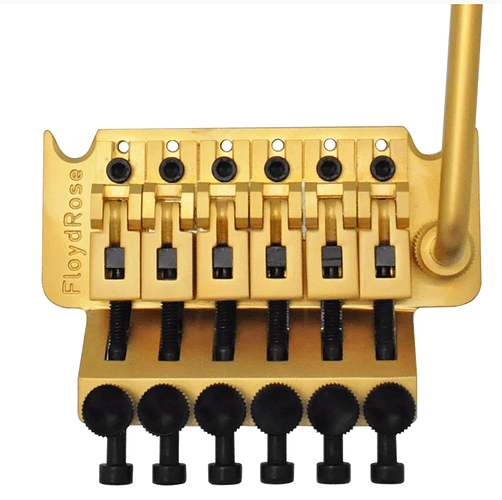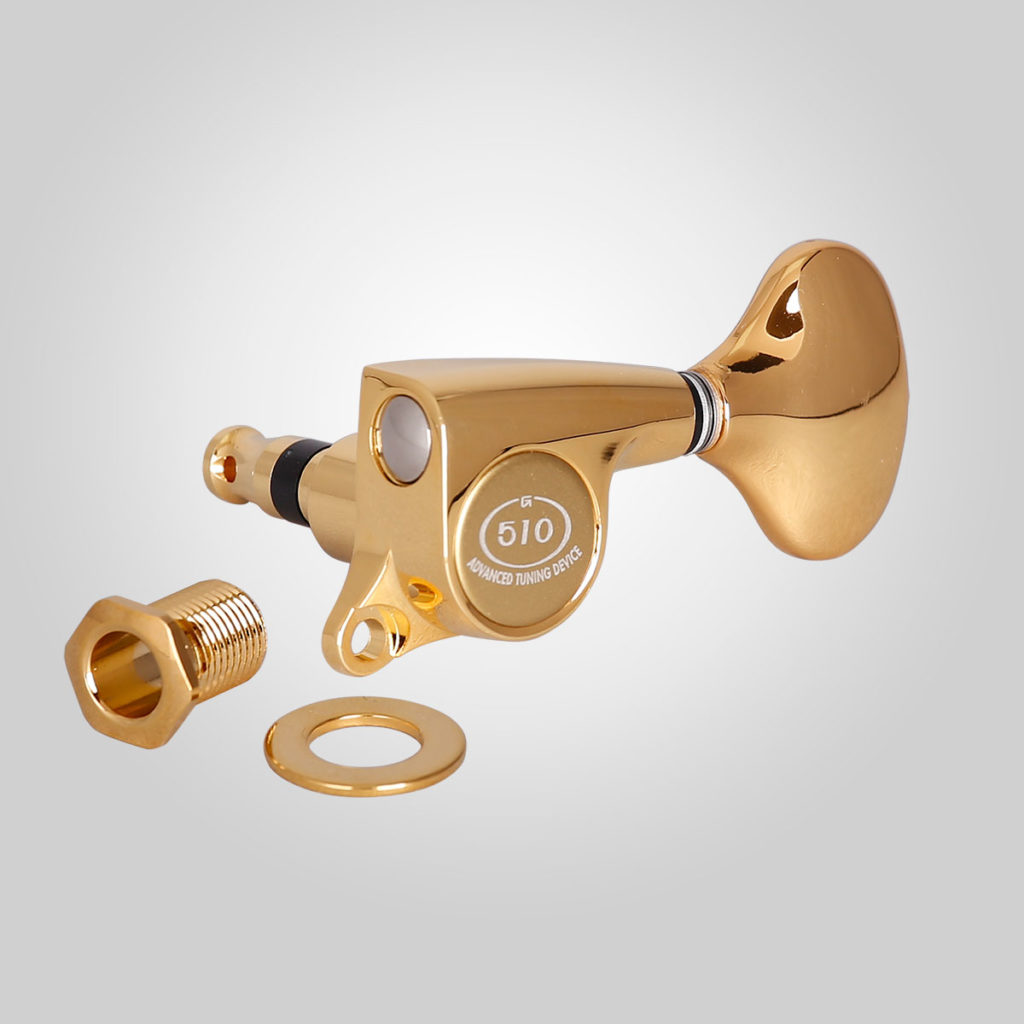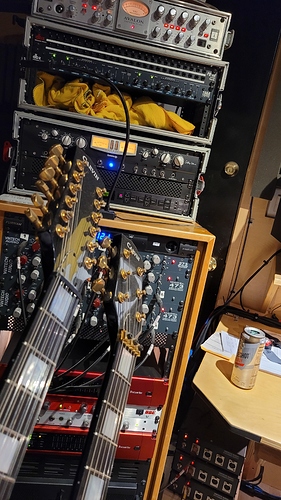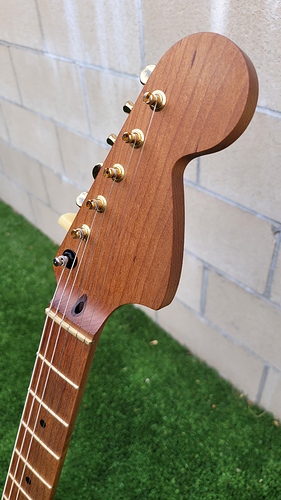I hear great things about that gold wire.
Jeff Loomis and I disagree 
Hehe yet playing Lenny on a strat with ss, it’s a bad use case. But I’m sure it’s great or better in other cases.
Agreed. Everything is specific to the type of sound/style of music. For me, stainless steel frets work great. I love the sound and response from them.
The Jescar Gold Evo Fretwire is only slightly less hard than stainless, but can be worked without stainless-specific tools and without accelerated tooling wear.
It’s Gold colored all the way to the core and has no overt overtones.
I’m super pleased.
It’s has the strength of SS but still retains the a traditional tone, am I right? I researched this to death at one point but never got down to the build.
Correct. It’s a little under 300 hardness - about 250 IIRC, whereas nickel silver is 170 or so…
The gold frets do looks great on that guitar.
I think my main concern is that if I switch to gold frets next my aesthetic senses will make me want to
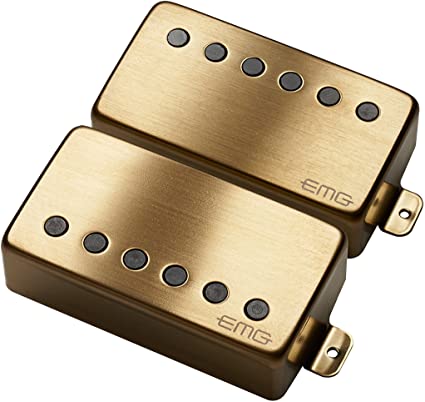
and
and of course would have to

I feel the same way, but I have a huge mismatch of hardware and I’m OK with that on a working guitar.
for whatever it’s worth - I have a couple guitars with stainless fretware these days, and while they were all ordered that way so I can’t speak to a true A/B comparison (nor could I easily do one anyway, since a typical refret has a guitar away long enough that I’d be hard pressed to identify clear changes in tone)… Well, I don’t think I’ve ever noticed anything fundamentally… consistent, I guess, in the tone of the guitars with stainless vs the guitars with nickel-steel. I’ve never keyed in on any one similarity where I can say, “ah-HA! THAT is the sound of stainless, while that is clearly the sound of nickel steel!”
I can’t claim my experience is uniform, and again it’s awfully hard to design a true A/B test here to control for everything but fretwire… But based on my experience over the last I guess eight years now of playing a mix of guitars with and without stainless, the “tone” of stainless frets is not a reason to consider getting or not getting them.
For whatever it’s worth the biggest “pros” i my experience is they never oxidize and (provided you don’t use stainless strings, which would wear them like normal frets) they last essentially forever, and the biggest “con” is luthiers often hate working on or installing stainless because they wear through tools way faster.
Any subtle anomalies will disappear in a live mix anyways. Corrosion resistance and wear resistance, as you have said, is reason enough.
I’m not good at this sort of stuff, and my guitar tech implies that a lot of the features brands advertise for keeping the guitar in better tune is snake oil. But here’s what I know:
- I only used Floyd Rose and Edge tremolos for most of my life because I had a friend in high school whose Fender wouldn’t stay in tune, and I thought a locking nut was the only way.
- In the last few years, I’ve bought 3 Suhrs (strat, tele, and modern), and without locking nuts, they all stay in tune BETTER than my Ibanez or my Schecter with locking nuts.
For whatever reason, it’s still easier to divebomb with my Floyd and Edge. The Gotohs take more pressure. But they stay in tune.
Also, I love my stainless steel frets. I get no weird tone issues, and bending is a joyful experience.
My Schecter Hellraiser C1FR has a Floyd Rose 1000 with titanium bridge posts. It’s used regularly as a session guitar and it’s tuning stability is absolutely dead-on no matter what you do to it. Big bends, dives, pull ups, it’s totally unaffected.
I have a Jackson Adrian Smith that was given to me by a sponsor and it has a Floyd Rose 1000. It also has flawless tuning stability.
The problematic Floyd’s, IMHO, are the ‘Specials.’
My 1982 Stratocaster 6 screw tremolo took a lot of work to get to that level of performance.
While a 6 screw Fender Tremolo can be made for divebombing, it’s a tremendous amount of work and so many fine details have to be taken into consideration.
I can’t hear the difference in fret materials for a note that is plucked while it is fingered. I’m wondering if there is something different in a hammer-on, where the string comes down to smash the fret… what is it that you people with golden hearing can discern? 
For fret wire I think Evo looks the best, and I would choose it over stainless only in cases where the guitar just wants to be even more beautiful. I’m just waiting for somebody to make tungsten carbide frets, as “nothing satisfies like excess.” 
I think your hit the point of distinction, it’s on the hammer ons. Pre fretted notes don’t have an issue.
@VonHerndon, have you heard of or tried the Vegatrem?
I came across them when I was researching upgrading the trem
on one of my strats. Curious what you think
I have several Schecters (Jeff Loomis models obv  ) and they all have the Floyd Rose 1500.
) and they all have the Floyd Rose 1500.
Amazing trem. I think I may prefer it to the Original Floyds I have or if not it’s definitely their equal.
@D.Llewelyn - That’s very interesting. I had never heard of that system before. However, the joker in the deck here is still the nut. Unless the nut is cut correctly, even the Vegatrem won’t stay in tune.
I looked at their white paper and they mention cutting the slots really wide and putting grease in the nut.
I can see that the way this tremolo pivots will give it a lot of reactivity and make it very touch sensitive, and I can see why that is so popular.
One thing I did on the YelloStrat was to create a threaded collar that uses wave washers to totally eliminate all unnecessary movement of the tremolo arm. This (as I’m sure you know) is one of the biggest killers of tremolo feel.
Last night, I played as a guest with a band in Corona, California. I did a lot of whammy tricks on YelloStrat and I intentionally played open chords immediately after tremolo phrases to let everyone know I was still in tune.
I had so many people come up and ask how I was keeping it in tune, with vintage, hollow-post tuners and a big, ugly Gibson tuner on the low ‘E’ string. I told them that it’s really all about the nut…
If you look closely, you will see that the nut is cut totally “wrong” in that it has very deep slots to keep the strings in the nut during deep tremolo dives or when violently back-picking a note, but the basic premise is a precisely cut slot that runs as straight as possible to the tuner post.
I see setups here in SoCal almost everyday where a person will cut a nut slot for a .046" low ‘E’ to .060" and a. 009" high ‘e’ to around .025" respectively, to try and compensate for the lateral misalignment.
What happens with slots that wide is you get lateral movement of the string when bending that causes the string to “ride up” the slot floor radius. This will often create an audible click and in some cases, it will allow certain strings to run off the edge of the fret ends. The string can also pitch sharp very quickly when bent (as it rides up the radius in a super wide slot) which can be a challenging to get smooth, accurate bends.
I cut the slots only .004" to .006" larger than the strings so I’m depending on precise alignment as opposed to just making the slot wide enough to compensate.
IMHO, the Floyd is a much better system, but I was just determined to make this guitar work with the stock tremolo.
There are SO many other variables when hammering on (or pulling off), though - I can hear a difference if I listen carefully between fretting at the harder, more callused and bonier tip of my finger, than on the softer, fleshier pad, and that’s a much more pronounced change in hardness than stainless to nickel steel (my best guess is that the fleshier part gives a bit more before fully depressing the string enough to fret which dampens higher frequency vibrations a hair, from that microsecond of contact). That alone, and player choices on things like what part of the finger they tend to fret with, is going to trump pretty much any other effect when playing legato. By comparison, the difference in hardness between stainless and nickel steel is minescule.
As a guy who’s only really started to get his picking together in the last couple years, and has played mostly legato for most of his life, I’ve never heard a consistent, audible difference between my guitars with stainless and with nickel steel frets. It’s not impossible that there is one that I just can’t qwuite make out, of course, but when deciding between fret materials, the impact on tone would be the last thing I’d worry about.
(not going all conspiracy theory here, but the people I mostly hear complaining about the “tonal quality of stainless frets” are luthiers giving reasons why they won’t work on them, aside from stainless being a huge pain in the ass to work on. Just saying…)

